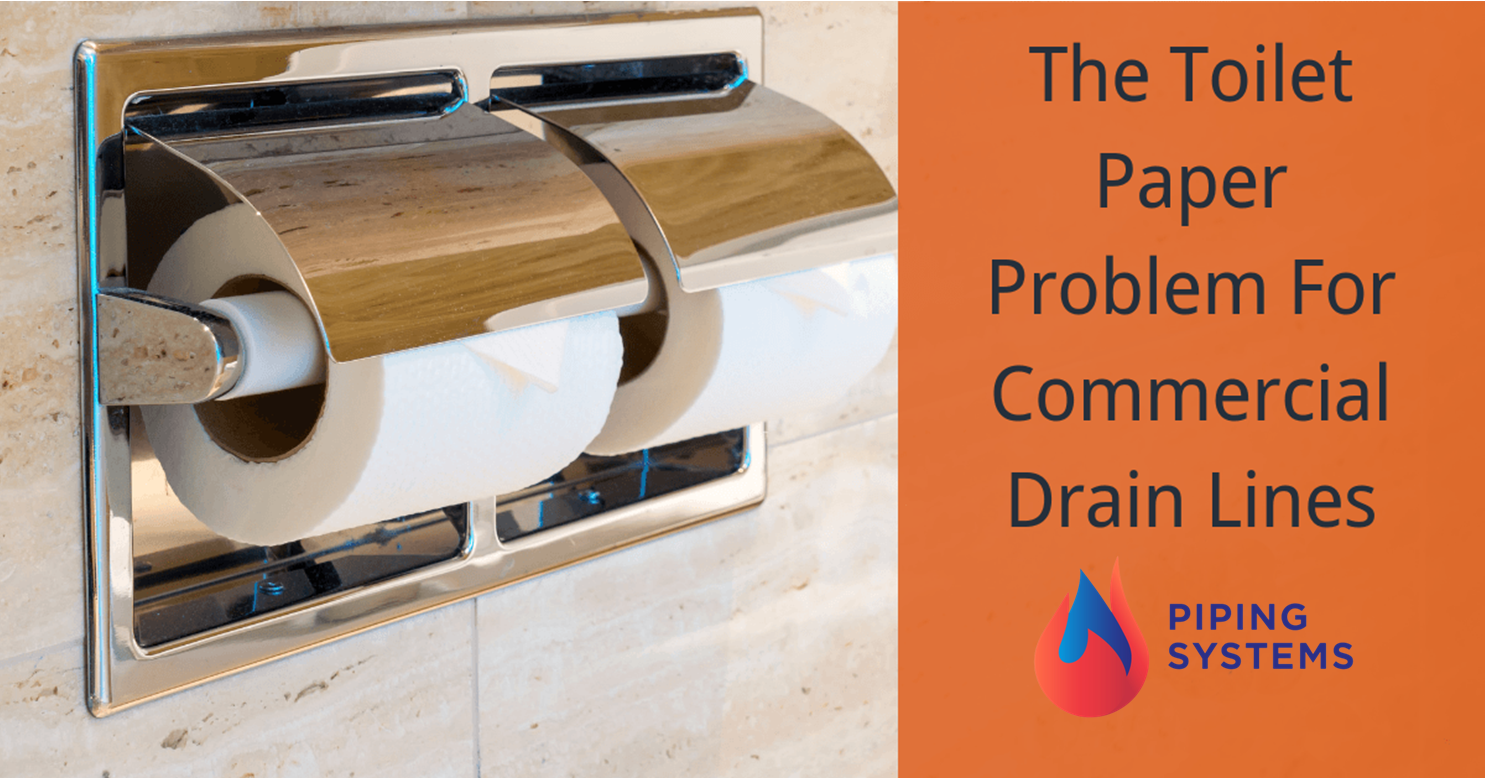Published July 8, 2019

One of the critical balancing points for any commercial building plumbing system is the reduction in the amount of water used for flushing of toilets and the subsequent problems with blockages in commercial drain lines. With water-saving incentives in place, and an increasing number of low flow toilets (also known as high-efficiency toilets), there is an increasing risk of blockages in the drain lines, which can result in backflow through fixtures, increased costs of plumbing repairs and slow draining toilets throughout a building.
According to studies completed by PERC, or the Plumbing Efficiency Research Coalition, the issues with blockages in commercial drain lines continues to be an increasing problem. The studies focused on the ability of a drain line to handle toilet paper and less on the specific evaluation of a low flow toilet brand or model.
The results showed that there are several factors to consider to prevent this problem. As low flow toilets are effective at limiting the use of water, it is important to address the other factors in the system. Knowing how to design and install these commercial drain lines is a critical factor in limiting any potential risk to the system for constant blockages and performance issues.
The Slope of the Drainage Lines
To anyone working in the plumbing industry, it is not surprising that the PERC study found that the slope of commercial drainage lines had a significant impact on how frequently or infrequently the encountered clogs due to toilet paper and waste. With an increase of just one percent in the slope, or moving from a 1% slope to a 2% slope, the problem was greatly reduced.
Factoring this type of 1% increase in the slope of drainage lines can be done at the design stage of any building. This is a very slight change over standard plans, but it is instrumental in preventing future problems, even with the smallest volume low flush toilet types.
Toilet Paper Selection
The second essential and controllable factor in preventing blockages in commercial plumbing systems is to choose the toilet paper brand and type wisely. The toilet paper that breaks down when exposed to water the most rapidly is always the option that will offer a lower risk of blockages in the lines.
There are several types of toilet paper that are designed to dissolve quickly when exposed to water. A simple test of placing a sheet of toilet paper over a plastic cup, securing it with a rubber band, and then wetting the surface for 60 seconds is a basic test. Stack ¼ inch steel washers on the center of the wet paper and note the number when it breaks. The lower the number, the faster the toilet paper dissolves. Finding a brand that offers softness and durability while also providing fast dissolving in water is the ideal solution.
Of course, larger diameter drain lines are also less likely to clog than smaller diameter lines. However, larger diameter lines are also more costly to install, and addressing the volume of water in a flush, the slope of the lines and toilet paper in use is typically a more cost-effective option.